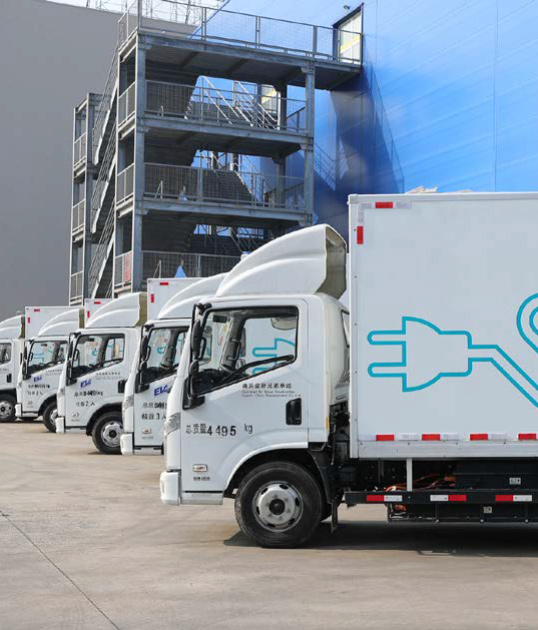
Retail is the largest employer in the UK, accounting for one in ten of all workers. It’s in almost every community and location in the land and pays 10% of all business taxes despite accounting for half that proportion of the UK’s GVA. Retail is the first job most people have and is the biggest employer of people who walk to work. It is disproportionately an employer of people with caring responsibilities, for young people with entry level qualifications, and for women.
Retailers are responsible for implementing a whole range of government regulation, from reducing plastic use, increasing recycling through deposit return schemes or improving the nation’s health through restrictions on high fat, salt and sugar content foods. Retailers also pay 25% of all business rates. For some retailers, rates account for half of their total tax bill and are often the biggest hurdle of store viability.

Despite this, it seems like government takes retail for granted. It’s hard to escape the suspicion that an attitude persists in parts of Whitehall, particularly the Treasury,
that assumes retail will always look after itself and land on its feet. There will always be shops, new businesses will take over from old ones in a constant cycle of Schumpeterian reinvention and, while the shape and look of retail may change over time, it mostly only needs benign neglect interspersed with occasional limited tinkering.
Retail is certainly an incredibly self-sufficient and resourceful industry, outperforming the broader UK economy in terms of productivity in recent years and running on wafer-thin profit margins in an extremely competitive environment. Insofar as the industry has looked after itself and landed on its feet, however, it has done so under increasing strain. Headwinds abound, with the cost-of-living crisis impacting consumer expenditure, and the increased cost of sourcing, manufacturing and transporting. Then there are the occupational costs, business rates and overall reduced margins. So how does the retail industry manage all these burdens as well as consider their place in reducing environmental impact?
THE CLIMATE ACTION ROADMAP
Nothing is more pressing than the need to reduce our carbon emissions. The British Retail Consortium (BRC) has estimated that the retail industry emits 215m metric tonnes of carbon, based on the emissions created by the goods sold annually in the UK (this figure excludes vehicle and fuel sales). Food, drink and tobacco account for the lion’s share of this, being responsible for 62%.
There’s no point selling the best value t-shirt if the planet is uninhabitable. That’s why the BRC has worked with members to develop its ‘Climate Action Roadmap’1. Launched in April 2021, the roadmap is a plan developed by the retail industry that sets out its ambition to go net zero by 2040 for all products sold in the UK (‘Scope 3’ emissions), ten years earlier than the Government’s 2050 target. Beneath this headline target, the industry will move faster to meet net zero targets by 2030 for retailers’ electricity use (‘Scope 2’ emissions) and by 2035 for fuel, gas and refrigerant (‘Scope 1’ emissions).
The roadmap sets out five ‘Pathways’ covering the main areas of the industry’s activity and carbon emissions. These Pathways address: using data to understand sources of greenhouse gas emissions; operating efficient properties powered by renewable energy; moving to low carbon logistics; sustainable sourcing; and helping employees and customers move to low carbon lifestyles.
GREENING RETAIL PROPERTY
The Roadmap has been signed by over 70 of the biggest retailers in the UK. The signatories are working in partnership with the BRC and other partners to develop tools, policies and best practice to support and inform retailers’ progression across all the Pathways.
Perhaps of most significance to the retail property industry is Pathway 2, which focuses on operating efficient sites powered by renewable energy and has already produced its first output. The Retailer-Landlord Protocol2, launched in November 2021, sets out the range of principles that retail occupiers and landlords should take into account when negotiating new leases. They cover things like consistent use of, and demand for, data, flexibility for tenants in putting in energy-saving measures, and positive approaches to funding and allowing relevant property improvements.
The Protocol is only the first step. The BRC doesn’t keep data on the extent to which retailers conform to it, nor do we have powers of sanction, and we rely on member engagement in developing tools and then member willingness to use them to meet the roadmap’s targets. So, we are going to build on the Protocol with further work this year, and beyond.

COLLABORATION IS KEY
The BRC is looking to develop the principles of the Protocol through three specific projects in 2022. We will be working with Mitsubishi Electric to produce a series of best practice toolkits on energy use that retailers can access and use to support their net zero programmes. We are also working with the Crown Estate and other partners to develop the ideas in the Protocol into a set of ‘Green Clause’ templates that retailers can use to embed the ideals of the Protocol into practical applications.
We hope to work with landlords to jointly develop these so that they can be broadly supported and adopted and can help nudge the market into using new standard clauses. The aim is to reduce the friction cost of agreeing leases for sustainable buildings, or to undertake more sustainable practices once in occupation. Finally, we will also develop a toolkit to support those retailers looking to install electric vehicle charge points for their customers. There is a plethora of options out in the market, and support for retailers navigating these would help to reduce Scope 3 emissions.
Collaboration has to go upstream to government as well. Retailers do not have deep pockets and if they are to invest in the climate initiatives that we all know need to happen, then the Government needs to reflect on retailers’ abilities to make improvements given their commitments through levies such as business rates. In effect, policy from one quarter is hindering policy from another. The burden of rates must fall to allow space for more investment in more urgent and productive areas of the industry, such as meeting its own targets for net zero.
Despite challenging economic headwinds, the burden of business rates and other regulatory costs, retailers are committed to more sustainable stores, and greater use of renewable energy to power them. The ongoing transformation of the industry to a new omnichannel setting is part of its new approach to physical property, and ensuring that those stores that remain are attractive, relevant, and sustainable, both economically and environmentally.

PLACING CHG DATA AT THE CORE OF BUSINESS DECISIONS

OPERATING EFFICIENT SITES POWERED BY RENEWABLE ENERGY

MOVING TO LOW CARBON LOGISTICS & SOURCING SUSTAINABLY

HELPING OUR EMPLOYEES & CUSTOMERS LIVE LOW CARBON LIFESTYLES

